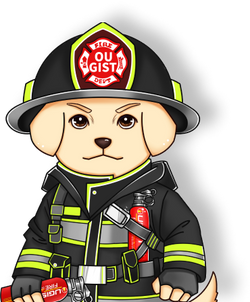Fire, a mesmerizing and powerful force of nature, has both fascinated and frightened humanity throughout history. Understanding the basics of fire, its characteristics, and how to control it is crucial for our safety. In this reporter's guide, we delve into the fundamental aspects of fire, exploring its nature, the mechanisms of its spread, methods of extinguishing it, and the classification of fires.

What is Fire?
At its core, fire is a chemical reaction known as combustion. It involves the rapid combination of oxygen with a fuel source, releasing heat and light in the process. The three essential components for fire to occur are fuel, oxygen, and heat—often referred to as the fire triangle.
How Fire Spreads:
-
Conduction: Fire can spread through direct contact. When a material is heated, the heat transfers to adjacent materials, causing them to ignite.
-
Convection: Hot air rises, creating currents that can transport fire to new areas. This is particularly relevant in enclosed spaces or during windy conditions.
-
Radiation: Heat energy in the form of infrared radiation can ignite combustible materials at a distance, allowing fire to spread without direct contact.
-
Direct Flame Contact: The most straightforward method of fire spread, where flames directly touch and ignite adjacent materials.

Four Ways to Put Out a Fire:
-
Water: The most common method, water cools the fire and removes heat, disrupting the combustion process.
-
Fire Extinguishers: Different types of extinguishers are designed for specific fire classes—A, B, C, D, or K. Understanding the fire class is crucial for effective extinguishing.
-
Fire Blankets: Smothering a fire with a fire blanket cuts off its oxygen supply, helping to extinguish it.
-
Sand or Fire Retardant Chemicals: These materials can suppress a fire by smothering it or interrupting the chemical reactions necessary for combustion.
Classifying Fire:
Fires are categorized into different classes based on the nature of the fuel involved:
- Class A: Involves ordinary combustibles like wood and paper.
- Class B: Includes flammable liquids and gases.
- Class C: Involves electrical fires.
- Class D: Refers to fires involving combustible metals.
- Class K: Pertains to fires in cooking appliances that involve combustible cooking media like oils and fats.
To learn more about portable fire extinguishers,Please click here to receive a discount.


